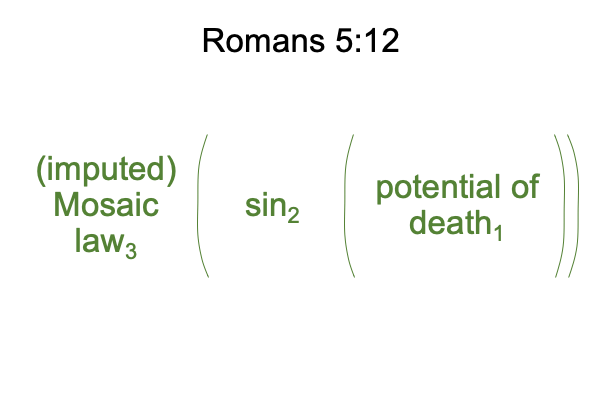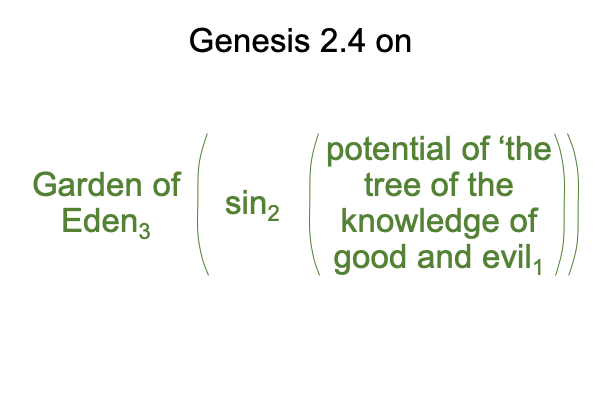Looking at Roy Clouser’s Article (2021) “…Support of Carol Hill’s Reading…” (Part 3 of 6)
0011 The first point keys into the second point.
Adam and Eve are the first humans in the history of redemption. They are neither perfect nor immortal. So, they screwed up.
0012 How did they do it?
They thought that they understood the meanings, presences and messages latent in their speech-alone words.
Ooops.
0013 This slip up brings Clouser back to Saint Paul, in his letter to the Romans, where Adam’s covenantal failure is compared to Christ’s covenantal success.
More or less, Paul says that sin enters the world through one man, Adam… but, wait a second… before Moses there is no law, so how can there be sin?
0014 In other words, the actuality of sin2 potentiating death1 in the normal context of the Mosaic law3 must have been functioning after Adam and before Moses, even though Moses is yet to be formally present.
0015 Clouser concludes that this imputation suggests that there are humans contemporary to Adam. Plus, their sins are not held against them, because God has not made Himself known.
0016 However, there are other suggestions that come to mind with the hypothesis of the first singularity.
Before Adam, do humans have access to a (metaphorical, or perhaps, literal) tree of life, which conveys an immortality unfamiliar to what we civilized folk currently imagine?
After Adam and before Moses, are folk, living within our current Lebenswelt, trapped within the imputation of Mosaic law, precisely as Paul notes?
0017 See the e-book An Archaeology of the Fall.
Also, see Comments on Original Sin and Original Death: Romans 5:12-19.
These are available at smashwords and other e-book venues.


